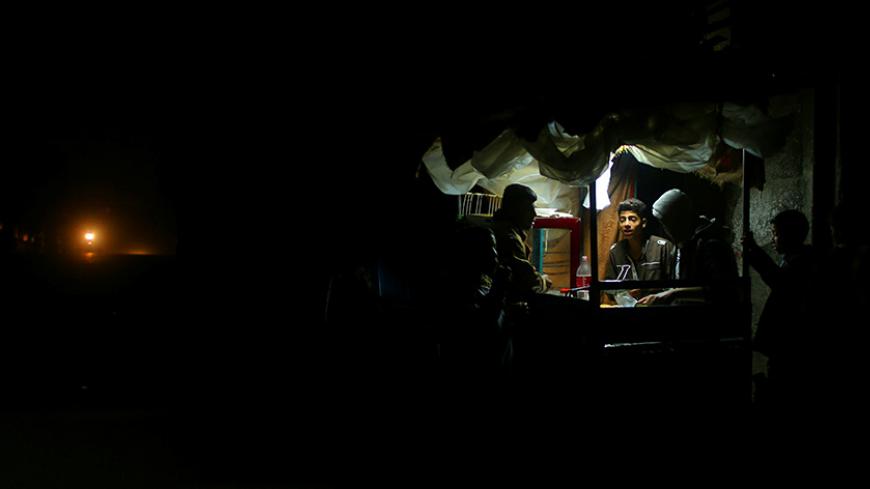In Gaza, pressure builds on Hamas to solve power crisis amid heat wave
Palestinian activists in the Gaza Strip are launching campaigns to pressure Hamas into resolving the power crisis, which has worsened this past month due to a severe heat wave.
.jpg?h=a5ae579a&itok=R3J69n6B)
GAZA CITY, Gaza Strip — A scorching heat wave in the Gaza Strip has worsened the power crisis in the besieged enclave, pushing activists to launch grassroots campaigns condemning Hamas’ failure to resolve the decadeslong crisis and demanding the movement to reveal where the money is going that it has been collecting from electricity bills.
Abdel Hamid Abdel Atti, a journalist with the local Al-Watan radio, started in mid-July a popular campaign on social media to pressure local authorities into resolving the power crisis that Gazans have been suffering from for nearly two decades. In a Facebook post, he asked Gazans to tweet the Arabic hashtag #Fourth-Generator, in reference to the out-of-service fourth generator of Gaza’s sole power plant. Since then, Palestinians have widely joined in the campaign, expressing their growing anger and frustration at Hamas, which runs the Gaza Strip.
“Qatar has supported Gazans with $10 million per month since 2018, and the Palestinian Authority (PA) is paying the bill of the electricity transported into Gaza from the Israeli side. The question remains: Where does the money [which Hamas] collects from the energy sector go? Why does the fourth generator continue to be out of service?” Abdel Atti told Al-Monitor.
Gaza has been struggling with severe power shortages since Israel bombed the power plant in June 2006, bringing it to a complete halt. Since then, the power plant has been repaired, but running only on three generators, while the fourth has been out of service due to fuel shortages caused by the Israeli siege imposed since 2007.
Today, the power plant operates at a capacity of 90 megawatts (MW) and the Israeli power grid provides the enclave with 120 MW. The peak demand for electricity in the summer and winter hits 600 MW per day, which means that the energy deficit ranges between 60% and 65%. As temperatures soared in July, electricity supply to households has been reduced to six hours a day, leaving Gazans without power for more than 12 hours.
Subscribe for unlimited access
All news, events, memos, reports, and analysis, and access all 10 of our newsletters. Learn more
Continue reading this article for free
Access 1 free article per month when you sign up. Learn more.
By signing up, you agree to Al-Monitor’s Terms and Conditions and Privacy Policy. Already have an account? Log in









